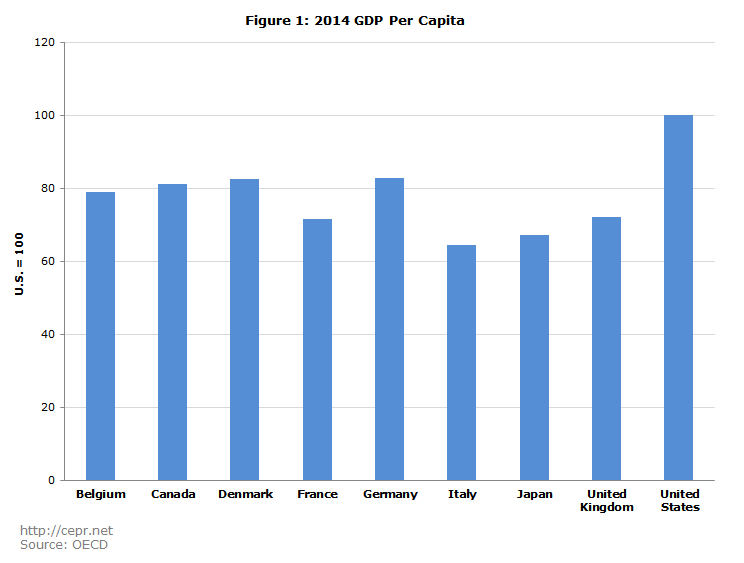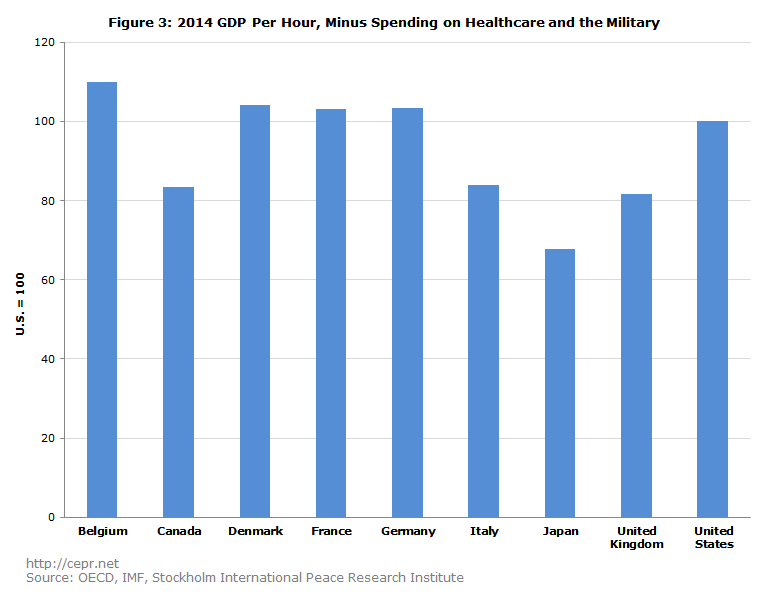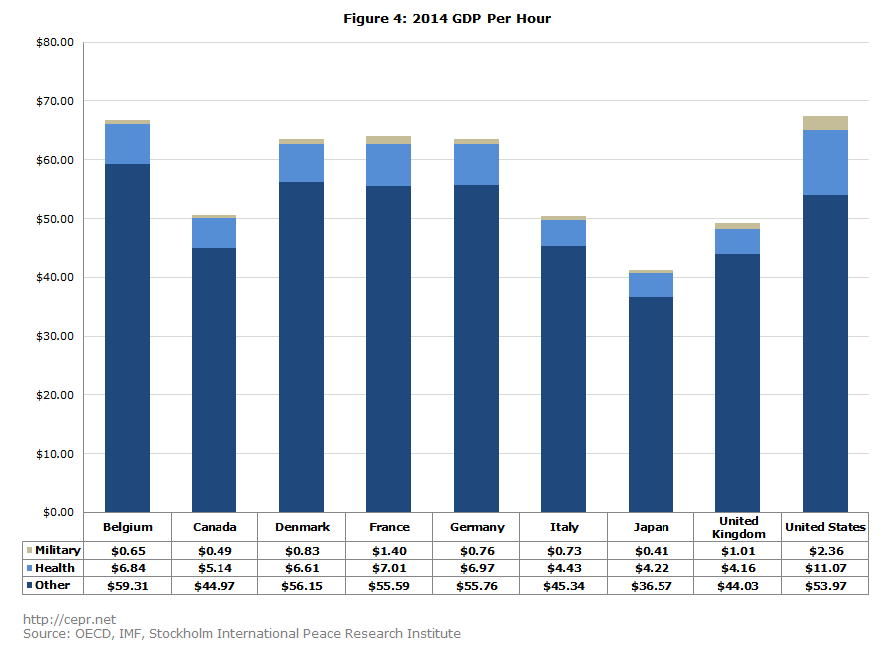October 08, 2015
A previous CEPR blog post titled “The U.S.A. as Number 1?” raised the question of whether the U.S. has the biggest economy in the world.
In terms of national income, the United States is no longer number one—that title now belongs to China, which surpassed the U.S. for the first time last year. Many commentators have noted, correctly, that the U.S. still has a much greater level of per capita GDP (income per person) than China. But if we are to judge economies by this standard, the U.S. still isn’t number one.
Nonetheless, the U.S. is a clear number one by at least one standard: we have the highest GDP per capita of any large country that could reasonably be considered a major player in the world economy. A severe recession in San Marino—a country of 32,000 people and over 40,000 cars, where annual incomes are about $6,000 greater than in the U.S.—isn’t going to worry any international leaders. By contrast, a severe recession in the U.S. would pose significant problems for many other countries.
The earlier post asked whether this higher level of GDP was actually leading to a better standard of living for most Americans. Using more recent 2014 OECD data, the U.S. still clearly has the highest income per person, as can be seen in Figure 1 below. The nine countries shown are the G-7 countries along with Belgium and Denmark, which were included in the original blog post; Italy and Japan are new additions.

Figure 2 follows the prior post in adjusting for hours worked. If a country has lower GDP per capita than the U.S. but equal GDP per hour worked, it’s not clear that it is actually worse off: the given country would have a lower average level of income, but would also have greater leisure time for its workers. This could consist of a shorter workweek, greater vacation time, access to paid sick leave, etc. Figure 2 shows GDP per hour worked in each country as a percentage of the U.S.’s GDP per hour worked:

The gap between the U.S. and most other countries narrows substantially when we account for hours worked. Belgium, in particular, is right on the heels of the U.S., with GDP per hour worked being less than 1 percent lower in Belgium.
The prior post then made adjustments for each country’s level of healthcare spending. The U.S. spends far more on its healthcare system than any other developed country. However, greater healthcare expenditures are useful only insofar as they improve peoples’ health. If a country is spending more on its healthcare system than its peers and is not experiencing better health outcomes, then much of its additional spending is likely pure waste. This is exactly the scenario in which the U.S. finds itself. It spends far more on healthcare than any other country, yet experiences worse health outcomes. This effect remains even when we adjust for demographics, obesity rates, and rates of smoking. Therefore, if we are trying to determine which country has promoted economic well-being to the greatest degree, we should remove healthcare spending, since the U.S. pays more and gets less.
In a similar vein, military spending does not directly affect individuals’ well-being. The benefit only comes in the form of greater security. We can leave open the question of whether other rich countries should feel more or less secure than the United States and ask what is left over to spend on goods and services after we pull out spending on the military. Of course, the United States spends the most on its military of this group, both absolutely and as a share of GDP.
When we remove both healthcare and military spending from the estimates presented in Figure 2, we see that the U.S. no longer has the greatest level of income per hour:

Belgium, which spends just 10.2 percent of GDP on healthcare and slightly less than 1 percent of GDP on its military, pulls into first according to this measure. Overall, non-healthcare, non-military GDP per hour is 9.9 percent higher in Belgium than in the U.S. Denmark, Germany, and France score second through fourth, respectively, with the U.S. coming in fifth.
Diehard patriots can claim that the U.S. has the best economy because it has the greatest level of output per hour. This is the sum of the dark blue, light blue, and tan bars in Figure 4 below. But when we remove healthcare and military spending that don’t provide direct benefits to individuals (light blue and tan), it’s no longer clear that the U.S. is number one.







